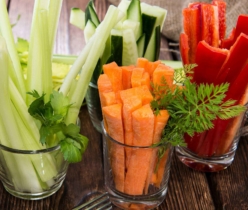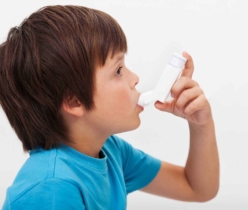The short answer is because 1) the food supply nowadays makes it very easy to overeat because processed foods are designed to be addictive and
2) metabolism slows in older age.
The way you combat it is to stick to your diet plan, avoid foods that spike your blood sugar, and do fasted high-intensity training.
The thing you must have is the self-discipline to stick to your diet plan. Intermittent fasting, drinking plenty of water, eating your calories, avoiding processed foods, and eating large salads make eating at a caloric deficit easier to stick to.
95% of my problem was bloating, not visceral fat. Bloating can be resolved in a week or two after you resolve the cause. If your belly measurements vary a lot from morning to evening or day today, you may have a bloating problem too. You can tell if you are bloated because you’ll either burp up the air or smell it out the back side. In my case, lactose intolerance was the cause and lactase pills were the answer. I knew I was lactose intolerant, but never imagined it was the cause of me looking pregnant. If lactose intolerance isn’t the case, you can abstain from FODMAPs and foods with lactose for 2 weeks.
If you do a DXA scan, you can get an idea of whether you have a bloating problem or visceral fat problem or both.
If you have a visceral fat problem, read on…
The most important thing to know is that “stubborn fat” in both men and women is stubborn for a reason: it is structurally different than regular fat because it has more alpha-2 receptors (which inhibit fat loss) than beta-2 receptors (which enable fat loss). This is why when you lose fat, you lose it everywhere except where you really want to lose it!
Presumably, the biological rationale for this difference is that your body is creating an “emergency store” of fat that is only available for use during emergency situations (like when you are starving). So to tap into those fat stores, you have to set up your hormones to mimic starvation as I describe below.
How did this happen to you and why is it happening now? Combination of age, genetics, your food choices, food availability, added sugar in the food supply, popularity of packaged/processed foods, and bad advice (like eating all the time instead of having periods of fasting).
Step 1: Set yourself up so you are losing fat, not muscle
Self-disciple is. You must have the will power to say no “most of the time” and stick to a deficit diet. If you cannot do this, you lose. If you can do it, you win. It’s as simple as that.
Diet is. You must fix your diet or you’ll never lose your belly fat. Eat at no more than an average daily 25% deficit to your TDEE. If you are lean, you may want to use a 20% deficit; if you are overweight, you can use a higher deficit. I use the Fat Secret app to track my macros (because My Fitness Pal was always “updating” every time I started the app). I can eat anything I want if I log it and it fits my caloric goal; this approach to flexible dieting is known as the IIFYM diet. I used to use My Fitness Pal but it was so annoying since it “updates” every time you bring up the app so I ditched it for Fat Secret which I’m very happy with. I also weigh all my food on a food scale. If you are serious about losing weight, you have only two choices: 1) stick to pre-calculated meals or 2) log your calories. If you undereat (like a 50% deficit) you will burn muscle and store fat. If you don’t restrict enough, you will not lose weight. So there is a very narrow range for losing fat. That’s why you need to track. My TDEE is 2500 calories so I shoot for 2000 calories/day for no longer than 2 weeks. Then I’m back at 2500 for the next 2 weeks. The two weeks on/off has been shown to be superior to a fixed deficit.
Drink plenty of water. It will make you feel fuller so it’s easier to eat less.
Eat large salads at least once a day. These fill you up, but have very little calories, making it much easier to stick to your caloric deficit for the day. Get most of your calories from real foods. Drinking your calories will make it harder because you will be less satiated.
Step 2: Stop doing things that create new stubborn fat
The rule to remember to avoid creating new stubborn fat: avoid things that spike your blood sugar.
Favor “real” foods (unprocessed or minimally processed), e.g., eggs, orange, apple, oatmeal, etc. This works because engineered foods with an equal amount of sugar and fat (like cheesecake, brownies, etc) cause people (and animals) to overeat (Note: there was an excellent BBC show on this research which showed sugar alone and fat alone didn’t trigger obesity; it was foods with equal amounts). Natural foods are generally one or the other, never both, so you never “crave” natural foods and eat them to excess. If you stay away from temptation, compliance becomes much easier.
A set meal plan and keeping temptation out of the house are key.
Minimize alcohol consumption. Excess consumption turns directly into belly fat. Avoid trans fats. Other fats are fine including saturated fats.



